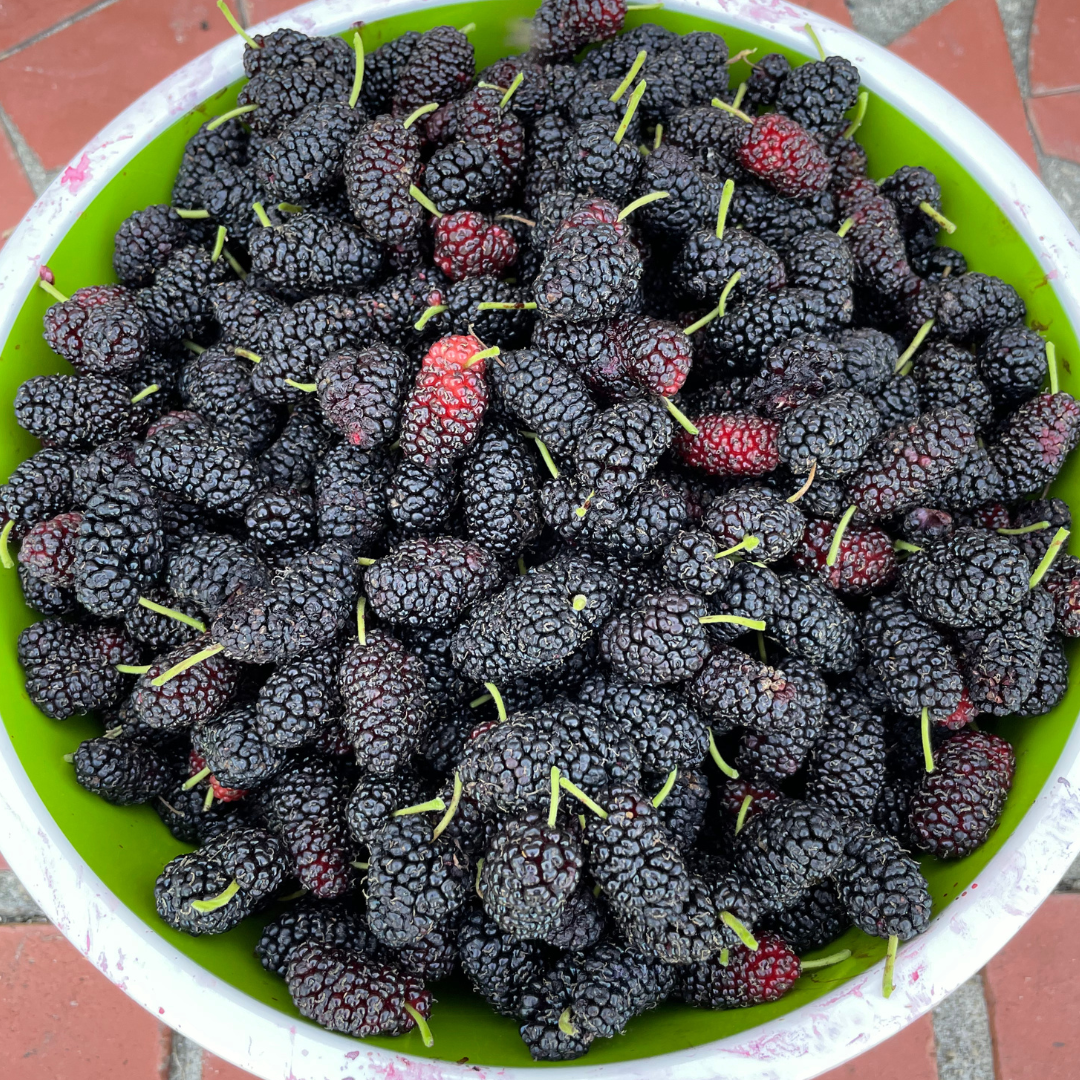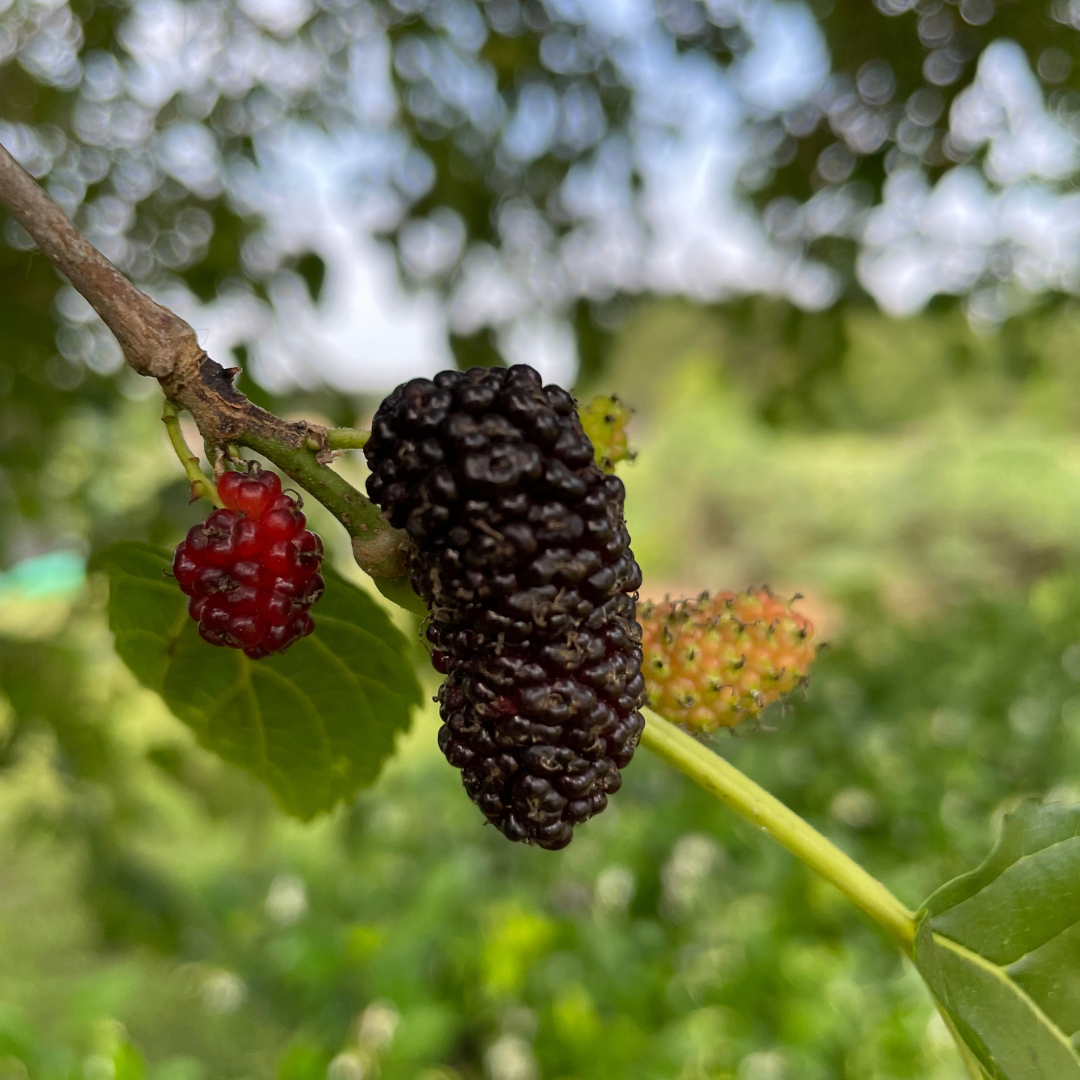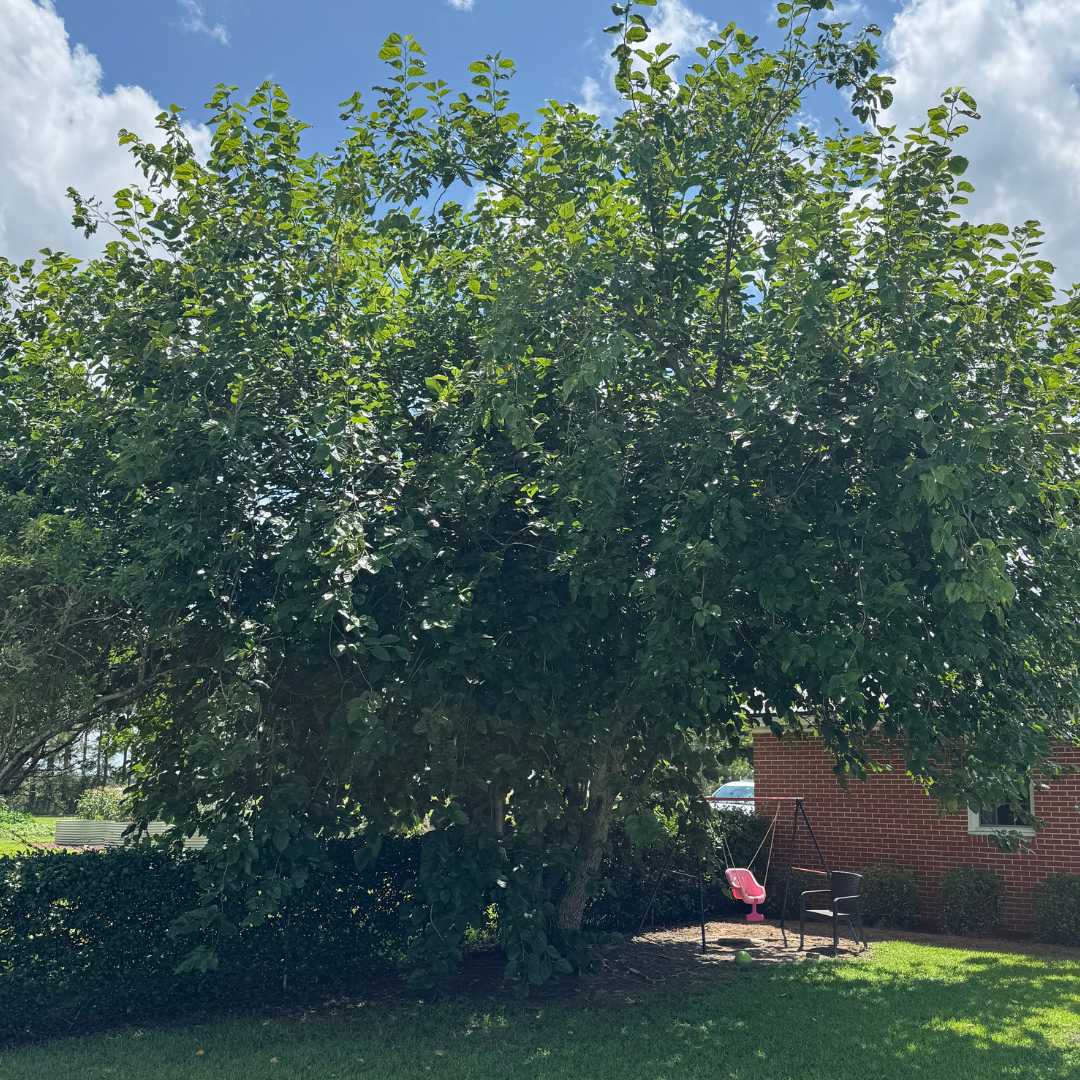Homer Mulberry Tree
Homer Mulberry Tree
Couldn't load pickup availability
• FREE SHIPPING
• NOT AVAILABLE FOR HAWAII AND ALASKA
Production Window
Production Window
Early to Mid Spring
Berry Color
Berry Color
Ripens Red to Black
Tree Size
Tree Size
Up to 30' Tall


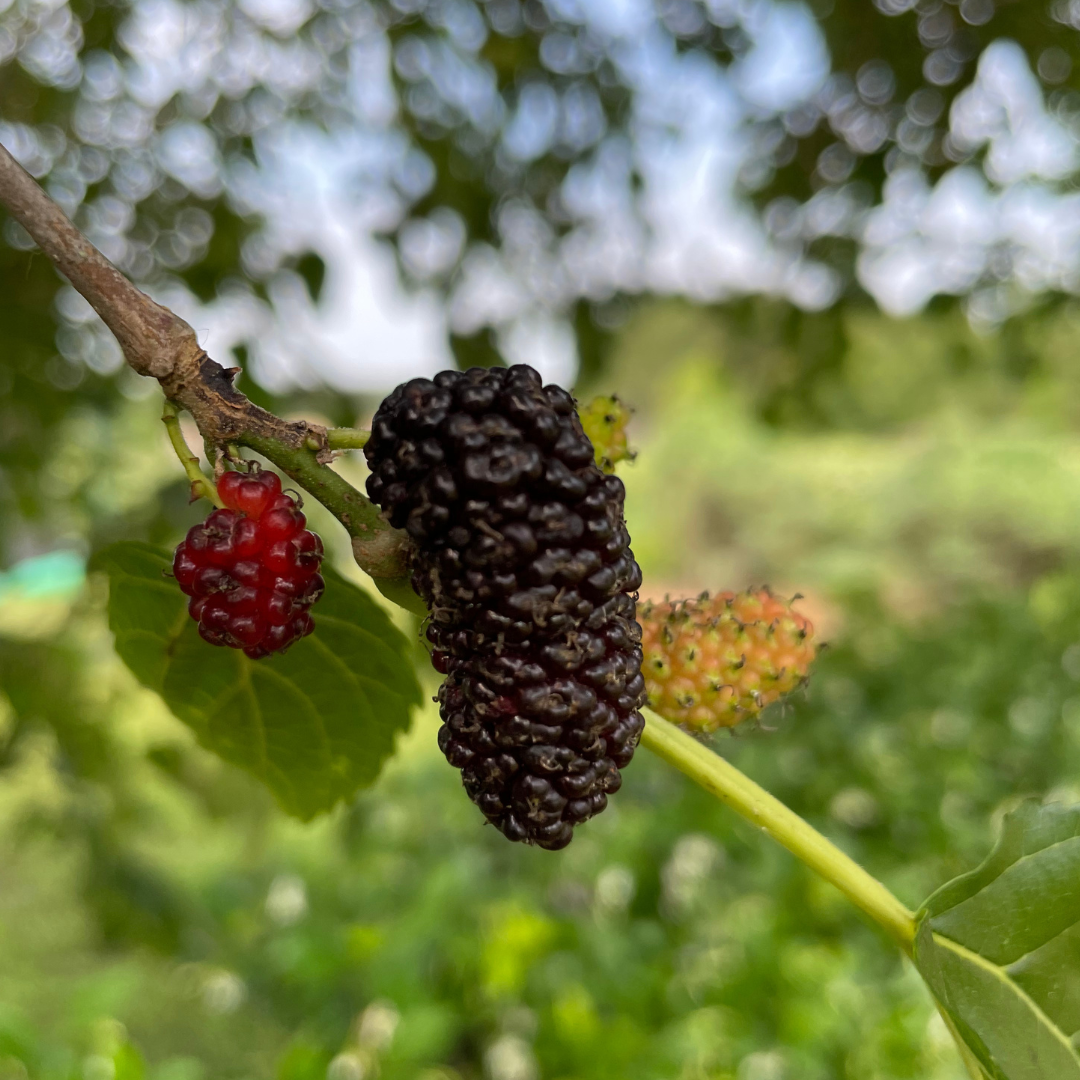
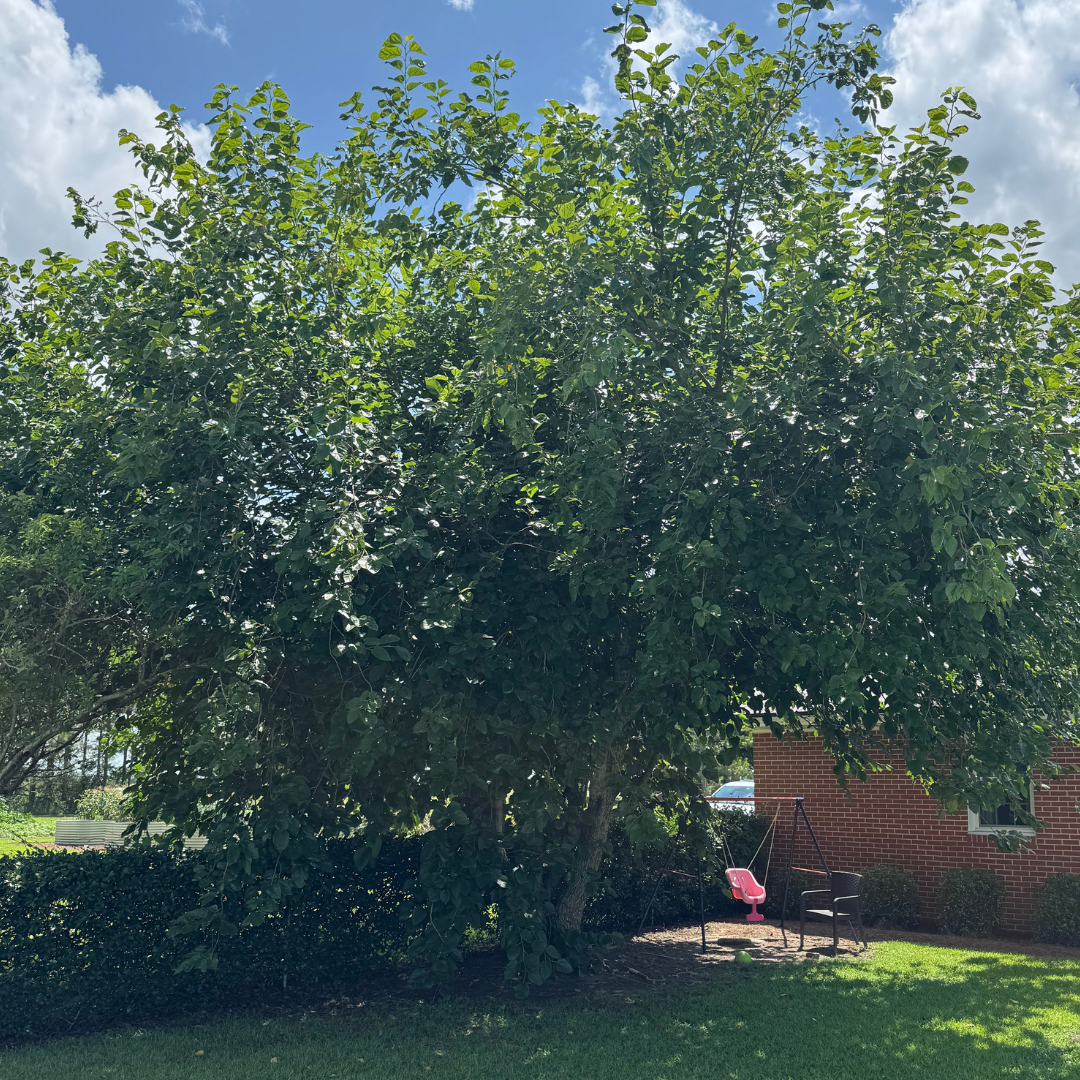
The "Homer" Mulberry is a variety that was growing on our property in south Georgia when we moved here in 2013. It was planted by my wife's grandfather long before we moved here and has provided a wealth of berries in our backyard over the years. After speaking with many mulberry experts in an attempt to identify the variety, we were unable to match the characteristics of this mulberry variety with any known varieties. As a result, we've named it after my wife's grandfather, whose name was Homer.
To the best of our knowledge, this is a hybridized version of Morus rubra (red mulberry) which is native to Eastern and Central North America. These trees can get quite large over time (30' tall and wide) and provide lots of beauty in addition to all the delicious mulberries. This species is said to be cold-hardy in zones 4-10, with established trees able to tolerate temperates as low as -25°F. Younger, newly planted trees should be protected from extreme cold. Due to the fact that mulberries can easily stain surfaces, we wouldn't recommend planting it near concrete driveways or porches.
Unlike the white mulberry (Morus alba) which can be considered invasive, red mulberries like this variety are typically not. We've never seen a volunteer plant in ten plus years enjoying this tree. Just be sure to plant it in a spot where it will have plenty of room to grow and expand. With some light pruning each winter, this variety makes an excellent shade tree for the front or backyard.
The Homer Mulberry produces a significant crop of mulberries in early to mid Spring. It will occasionally produce a few berries in the late summer and fall months, but the bulk of the production will occur in the spring. The berries will start red and ripen to a dark purple or black color. The berries are elongated and very sweet, which makes this variety superb for making jelly, cobblers, or other sweet treats.
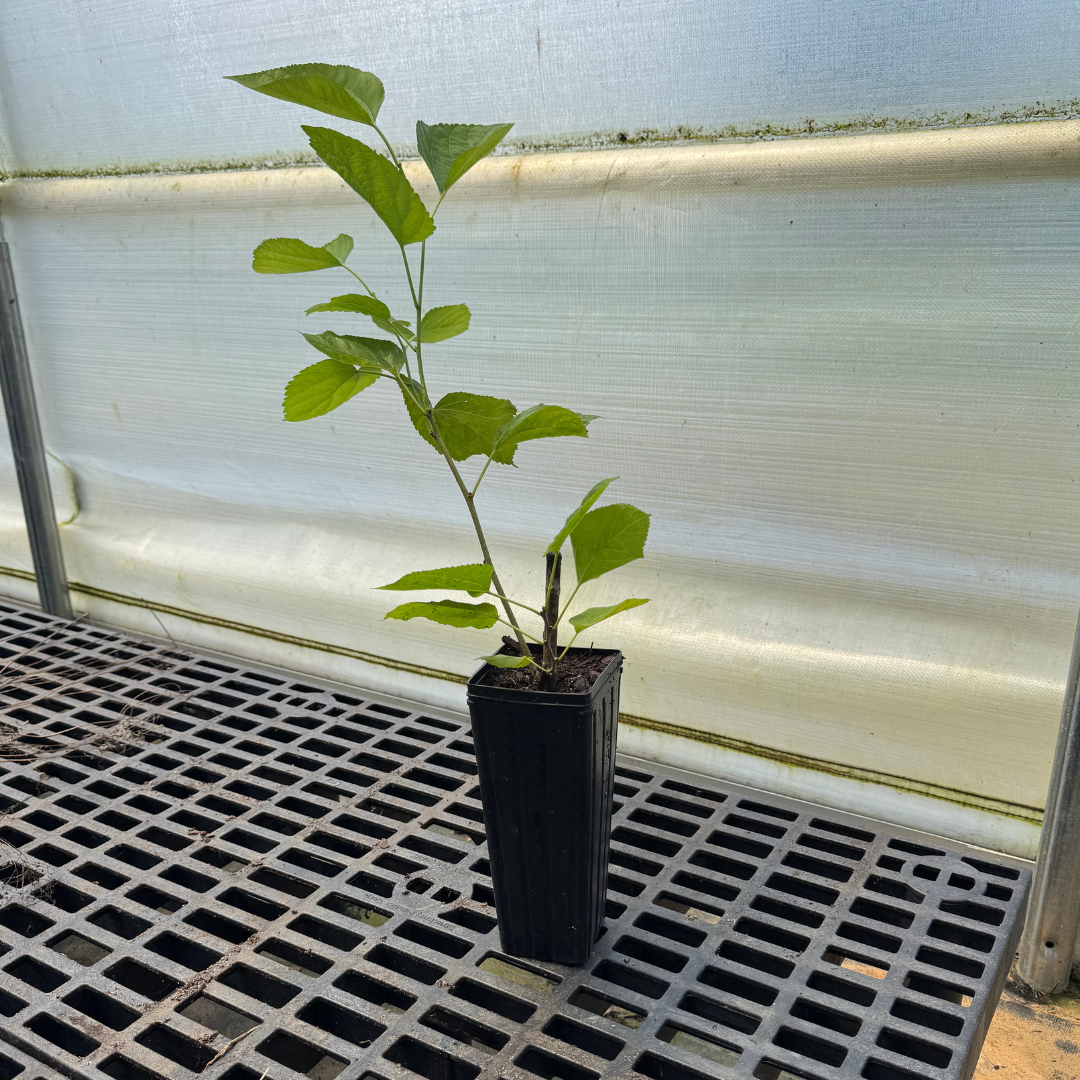
Mulberry Tree Shipping Info
- Mulberry trees will be shipped as temperatures allow. We won't ship trees if they could potentially experience freezing temps during transit.
- Each mulberry tree is shipped in a 4x9" pot with an established root system. All our mulberry trees are shipped individually. If you order multiple trees, you'll receive a separate box for each tree ordered.
- As soon as your mulberry tree is delivered, carefully cut open the box, remove the packaging, and allow the tree to get some sunlight.
- We recommend watering daily and waiting at least a week before planting. This will allow the tree to recover from any shipping stress and adjust to your climate.
Mulberry Tree Growing Tips
GROWING ZONES: Most mulberry tree varieties are cold-hardy to around 0°F, though this can vary slightly depending on the type (black, red, or white mulberry). If your winter temperatures routinely dip below this, consider planting in a protected spot or using frost cloth on younger trees. Mulberries also grow well in large containers, which can be moved indoors or to a sheltered location during extreme cold.
WATERING: Mulberry trees are relatively drought-tolerant once established, but they grow faster and produce more fruit when watered regularly. During the first year, keep the soil consistently moist (but not soggy) to help the tree develop strong roots. As the tree matures, deep watering every 1–2 weeks during dry periods is usually sufficient.
FERTILIZING: Mulberries don't require heavy feeding, but a little fertilizer can support strong annual growth and fruit production. Apply a balanced, slow-release fertilizer in early spring as new growth begins. Avoid high-nitrogen fertilizers, as they can encourage leafy growth at the expense of fruit. A soil test is the best way to identify any specific nutrient needs.
PEST AND DISEASES: Mulberry trees are generally very low-maintenance and resilient against pests and diseases. Occasionally, you might see spider mites, whiteflies, or caterpillars, but these rarely require treatment. Fungal leaf spots may appear in wet weather, but they are mostly cosmetic. Good airflow and keeping the area around the base of the tree clean will help prevent issues.
PRUNING: Mulberries respond well to pruning, which helps manage size and shape. They can grow quite large if left unpruned, so annual pruning in late winter (while dormant) is recommended to keep them manageable, especially in smaller yards or containers. You can also prune to improve airflow and increase fruit production on lower branches. Be sure to remove any dead or crossing limbs during this time.


